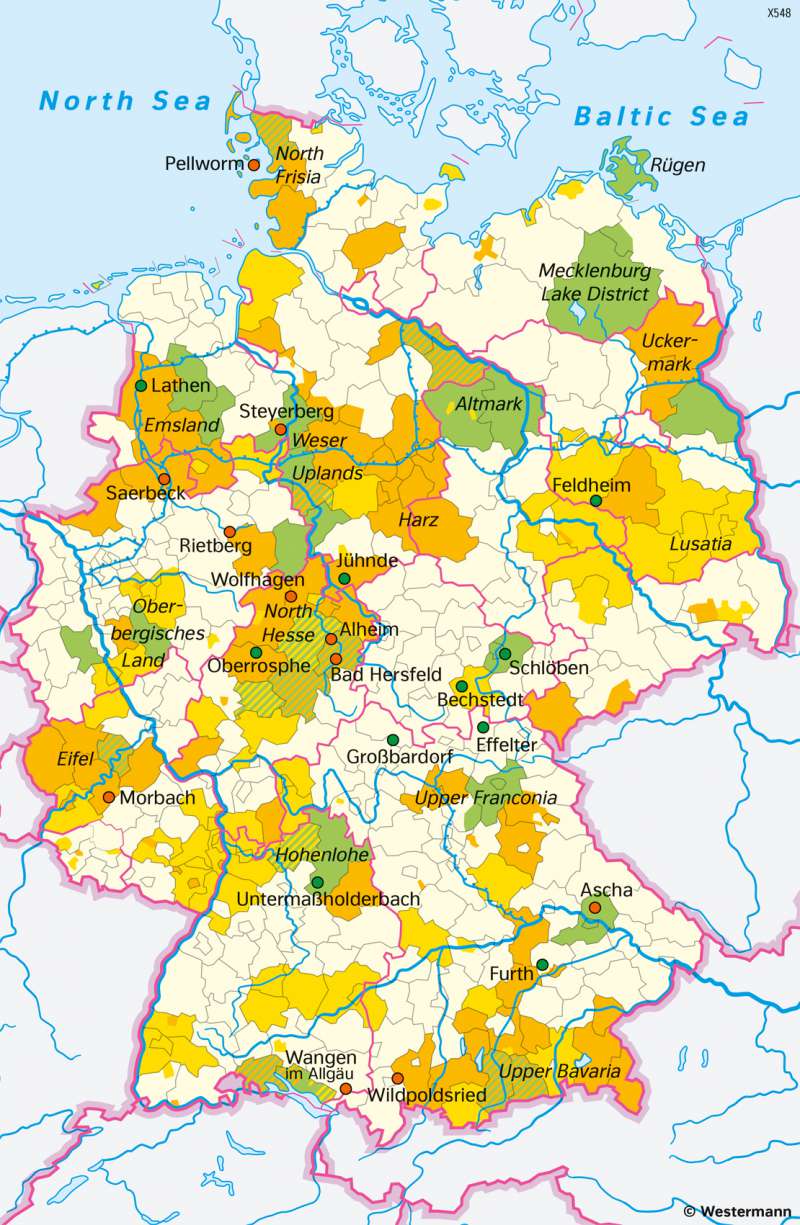Germany - Energy self-sufficient regions
Sustainable development
978-3-14-100890-6 | Page 96 | Ill. 2

Overview
Sustainable development paths have set themselves the goal of offering countermeasures for structural and climate change, and thus at the same time providing impetus for rural development as well. In this context, cities, settlements, and housing projects are understood as places that are particularly exposed to these negative consequences of global change (e.g. scarcity of resources or danger from environmental risks) and can thus test conscious alternatives as model projects for sustainability.
Regional efforts towards energy self-sufficiency
Energy supply in Germany is undergoing change in numerous sub-regions, from a previously predominantly centralised structure to a more decentralised one. In the course of this change, there are efforts at the regional level, especially in rural communities, municipalities, and districts, to cover energy needs with self-generated renewable electricity.
The map thus shows regions that are energy self-sufficient, i.e. that offer consumers only locally available energy carriers and energy sources that allow them independence regarding energy supply. The map is based on an administrative structure with the borders of the federal states and the respective counties. At various points, the names of the districts or regions are also shown (Hohenlohe, Lausitz, Altmark, or Weserbergland). It can be seen that energy self-sufficient regions are located throughout Germany and are often located in areas beyond large cities. Looking at the map, one can see that this approach can be implemented in a comparatively large number of regions and counties in Germany and can be considered a success as an action of the Federal Ministry for the Environment in cooperation with the Federal Environmental Agency.
The "100% Renewable Energy Regions" project, funded between 2007 and 2014 by the Federal Ministry for the Environment, Nature Conservation and Nuclear Safety and the Federal Environment Agency and still scientifically supervised by the University of Kassel, networks regions, municipalities, and cities that want to convert their energy supply completely to renewable energies in the long term. Currently, there are already more than 150 counties, municipalities, regional associations, and cities pursuing this goal, and the number is growing. New entries take place twice a year. Municipalities, regions, or cities that want to be designated a "100% region" need a political decision that targets the conversion to renewable energies in the medium to long term in order to apply for inclusion. The submitted application documents form the basis for the selection, which is decided by a jury.
In energy self-sufficient regions, heat generation is based primarily on solar thermal energy, bioenergy, or geothermal energy, while electricity generation is based on photovoltaics, wind or water energy or biomass heating plants. The demand for fuel is covered by biodiesel, bioethanol, and fuel gas ("power-to-gas") or substituted by electric cars. Bioenergy plays a major role in many regions because biomass can be used to generate heat, electricity or fuel and is therefore considered the most versatile source of renewable energy. In 2009, Feldheim in Brandenburg was named Germany's first "energy self-sufficient village." Here, 43 wind turbines were combined to form a wind farm starting in 1994. In addition, there is a biogas plant in the village, among other things, and electricity is produced on commercial sites using photovoltaics.
Author:
Tom Fleischhauer




